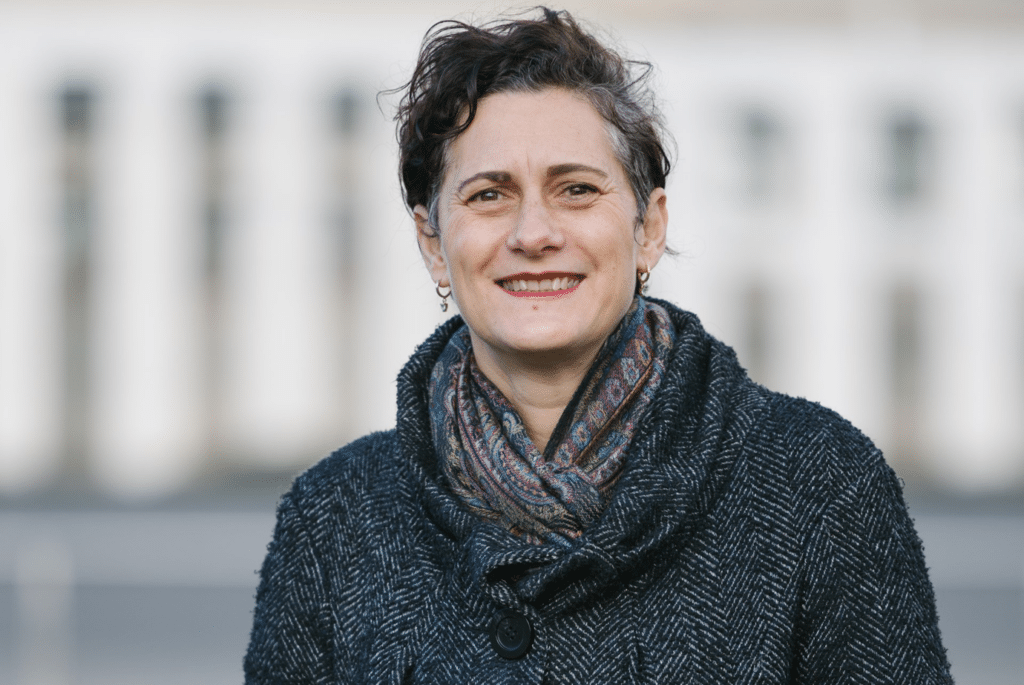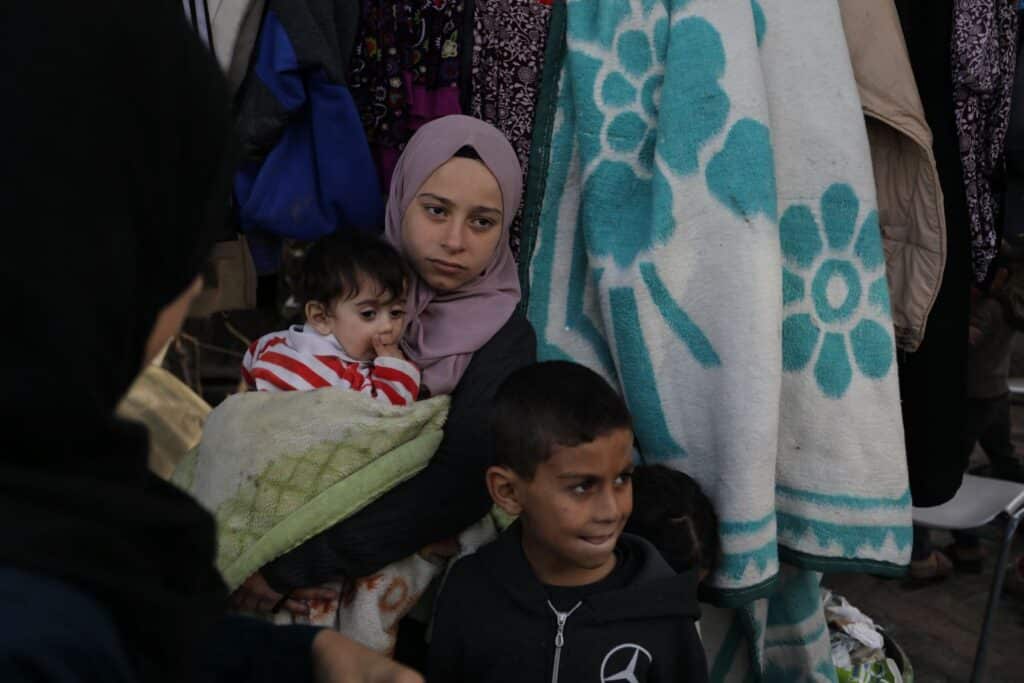For the last two weeks, a girl called Anhar has barely left my mind.
Little Anhar, a toddler from the north of the Gaza Strip. A composite, black-and-white image; one taken presumably not long before October 7 and the other taken in early March. In the first, little Anhar’s eyes are shiny and bright, her cheeks are full and plump. Her eyes are locked in fascination on something out of shot – perhaps a bird in the sky; or maybe her mother, holding up her favorite toy. In the second, shocking image, not even six months on, little Anhar is photographed laying lifelessly on a blanket. Her eyes are sunken and dull, her cheeks hollowed out, and her frame is skeletal.
Anhar’s name means river in Arabic. She died of starvation and malnutrition not long after the photo was taken.
I’m sure images like that of Anhar have been occupying many of your thoughts, too. Or perhaps it was two-and-a-half year old Khaled, his limp, dead body cradled tenderly one last time by his mother in a depleted Gazan hospital. Khaled was poisoned by bread made with animal feed. It was either eat that, or starve to death. Is it the weak and frail infants and newborns that you cannot unsee? At least 20 children have now starved or been dehydrated to death, many of them babies. The youngest was reportedly one day old. Many of these babies were born after the horrific events of October 7. All they have known in their short lives has been displacement, bombing and starvation.
In the last month, the world’s phones and screens and newspapers have been flooded with endless, soul-crushing stories of death, despair malnutrition and now hunger in Gaza. Each day, we think ‘can it get any more horrific?’. And each day, somehow, it does.
Having spent the last 10 years working in the humanitarian aid sector, the devastating impacts of hunger and food insecurity are something many of us working in this field witness day in, day out. We are in the thick of an unprecedented, global hunger crisis, mostly fuelled by a combination of the conflict in the Ukraine, and relentless droughts and other climate shocks. Much of our work is about finding a solution to it.
But what we are seeing right now in Gaza is a unique kind of food catastrophe. It is man-made, and entirely preventable. Hunger and severe malnutrition have now seeped into almost all parts of the Gaza Strip, as a direct result of Israel blocking and even destroying vital food, medicine, and other critical aid such as fuel, shelter, and warm clothing. Millions of Palestinians are on the edge of famine. Families have been drinking unsafe water for months and spend days without eating. Gazans make up 80 per cent of all people facing famine or catastrophic hunger worldwide. In any community grappling with food insecurity, it is always children and babies who are the most vulnerable to malnutrition, disease, and premature death. Even if they survive they often have life-long consequences – never going on to meet their full physical and other potential.
The intentional starvation of any civilian population is illegal under International Humanitarian Law. The UN’s Special Rapporteur on the right to food, Michael Fakhri, has now stated that he believes that the intentional deprivation of the Gazan people of food constitutes “a war crime”. This will be a matter for the International Criminal Court to consider in time.
Right now, in northern Gaza – where Anhar was from, and where 300,000 are trapped with no aid able to reach them – one in six infants are acutely malnourished or wasting, according to the UN. If unfettered aid is not immediately allowed in and prioritised in northern Gaza, we are going to see countless children like Anwar perish over the coming weeks.
Instead of the international community doing everything it can to secure an immediate and permanent ceasefire, and full, safe and unhindered humanitarian access, we are instead seeing some countries hide behind airdrops and efforts to open a maritime corridor. This is a tactic that creates the illusion that they are doing enough to support the needs of people in Gaza. They are not.
Let me be clear: this is not enough. The 2.3 million people living in a catastrophic state of survival cannot be fed and healed by the small amount of aid that can be delivered via airdrops. The people of Gaza cannot wait for ports to be built; they are starving right now.
The gravity of the situation could not be more profound. As a leader of a child rights organization with the mandate to help, I am tired, wrung out and worried. I have been called a bleeding heart and criticized from every side for the stand we are taking and for speaking up for children. I am reminded of the Toni Morrison quote, ‘no more apologies for a bleeding heart when the opposite is no heart at all. Danger of losing our humanity, must be met with more humanity.’

Australians know this: a new poll commissioned by some of Australia’s biggest humanitarian agencies including Plan International Australia, Oxfam, Action Aid and Caritas found that 4 in 5 Australians support a ceasefire in Gaza. In fact, a majority want the Australian Government to take more action to achieve that goal.
A ceasefire in Gaza – an immediate end to the unspeakable suffering – is simply not a fringe, or radical viewpoint. How on earth could wanting a ceasefire and a peaceful resolution to the conflict ever have been considered an extreme view?
Australians – right across the political spectrum – have now told us loud and clear that they are distressed by what they are seeing in Gaza, that this is an important issue for them and that they want our government to do more. Even when they may have vastly different political beliefs, and even varying political views on Israel and Palestine, what this polling shows is that Australians do have shared values around humanity – and that most of us respond deeply and with compassion to people, and particularly children, in crisis.
We are not divided. Australians want a solution to the suffering and rights violations happening in Gaza right now – and the truth is, there is action that our government can immediately take.
In welcome news today, the Australian Government has, finally, reinstated its emergency funding to UNRWA. UNRWA is the main aid provider for those in Gaza and its largest humanitarian agency. The humanitarian assistance they deliver cannot be replaced by other organisations – UNRWA’s survival is the only way that we can avert mass starvation and famine in Gaza. This week, Canada, the EU and Sweden reinstated their funding to UNRWA and after loud cries from Australians, today our Foreign Minister reinstated the $6 million it had frozen.
With 1.1 million children facing starvation in Gaza, this decision will unequivocally make an impact on the ability to deliver lifesaving aid to them.
Australia can of course and must continue to advocate for the release of all hostages.
Finally, the Australian Government can use all diplomatic means available to push for a permanent, immediate ceasefire and the opening of safe humanitarian aid corridors that are so desperately needed to give the children of Gaza, and their families, a sliver of hope and the chance to survive the horror movie we are all bearing witness to. We must not look away.


